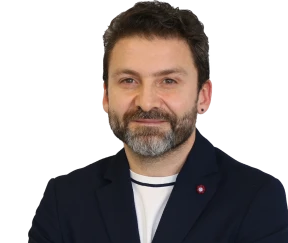What Is Otoplasty (Correction Of Prominent Ears)?
In ear surgery, also known as otoplasty, size, position or proportion of external ear called as auricle is changed. Prominent ears with an outward angle from the head can be moved close to head which is their normal position with otoplasty. If ears are in asymmetric shape and position, symmetry can be provided with surgery.
What Are Eligible Candidates For Otoplasty?
Otoplasty is a good option for people who has realistic expectations which can be provided with surgery and wants to improve his appearance. Ears with prominent, asymmetric and incompatible appearance with head can benefit from otoplasty. If you are healthy, have realistic expectations and would like to improve your appearance, you are a good candidate for the surgery. Any patients from any ages including adults and youngsters can be a candidate for ear reshaping surgery. As ears reach their full size at around 6 years, surgery can be made at any age after this age.
What Is Done In The First Medical Examination?
Your plastic surgeon, in the first medical examination, will evaluate your ears’ size, shape and position in order to determine whether you are eligible candidate for the surgery. Your medical history, your previous surgeries and your expectations from this surgery will be evaluated. Afterwards, information on the changes in your ears that can be seen after the surgery and the procedure will be given. Recovery period after the surgery and the points that you should pay attention will be told.
What Is Done During The Otoplasty Surgery?
Surgery is outpatient operated with local and/or general anesthesia and takes around 1 or 2 hours. Local anesthetic is injected to the region in order to reduce discomfort after the surgery. Cuts are usually hidden behind ears. Depending on the purpose of the surgery, excess cartilage which causes prominence and skin are removed. In order to fix the ear prominence, ears are pulled back closer to head with inside stitches. If ear curls are missing, they are made with stitches. A combination of techniques can be used in each patient depending on desired purpose. Ear is covered with medical dressing and bandages after the surgery. Patients are usually discharged after the surgery following a monitoring for a while. Dressing is removed after 3-5 days and ears are left open.
Where Will The Scars Stay?
It is taken care of to optimize the scar size and hide it under the less seen part. In many cases, it is possible to recover with very little scars. As the cuts are behind ears in otoplasty, scars stay in unseen parts. Emergence of scars varies between individuals and is strongly related to person’s genetic susceptibility. Scars generally fade away slowly in time
How Is The Recovery Period? How Long Resting Is Needed? When Can You Continue Exercising?
The procedure can take around 1 or 2 hours and the patient is discharged in the same day. For a comfortable post-surgery period and good results, it would be better to rest after the procedure. There can be ache responding to medicine during first couple of days after the surgery. There may be swelling and bruises in the surgical region after the surgery. It will recover by itself in days. In order to help reducing swelling and bruises, it would be appropriate to sleep head up for a couple of days after the surgery. Many patients can go back to work within 1 week. However, it would be better to make plans to rest for 1-2 weeks. During the recovery period, tiring physical activities should be avoided for 4 weeks after the surgery.
What Are The Complications Of The Surgery?
Prominent ear complications are rare as in other cosmetic procedures, and there can be scars, asymmetry, bleeding, infection, swelling and numbness. Complications specific to otoplasty are asymmetries which require a second operation including repetition of deformity.
When Will We See The Absolute Results Of The Surgery?
Results of the surgery will be seen immediately, and recovery will continue as swelling reduces. These swellings may continue in little amounts till 1 or 2 months after the surgery. Final contour results as well as scar quality requires at least 3-6 months after the surgery.




